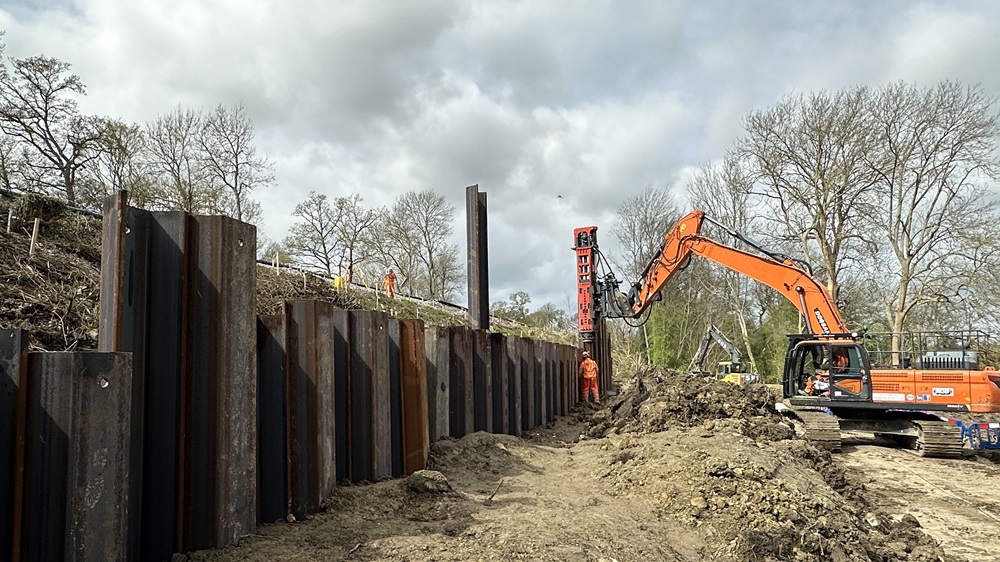The railway between Redhill and Tonbridge is set to reopen for the start of service this morning (Monday 15 April), following emergency landslip repairs at Bough Beech, near Edenbridge in Kent.
Over the last two weeks, Network Rail engineers have worked to install 91 sheet piles – 8-metre long sheets of metal – and strengthened the railway embankment over a 100 metre section with soil nails (steel rods) underpinning the railway, after the embankment became saturated and weakened because of recent heavy rain.
For safety reasons, Network Rail had to close the railway in its entirety to complete the work, with buses replacing trains during the work.
Mark Killick, Network Rail Southern Region Director of Engineering and Asset Management, said: “Our colleagues have worked tirelessly around the clock with our contractors over the past two weeks to repair this landslip, on what’s been quite a complex site for a number of reasons. I want to thank our passengers, freight customers and lineside neighbours for their patience while we’ve carried out this work, which has essentially been a giant underpinning operation.
“As each steel pile was installed we gained more and more confidence that we would be able to reopen the railway – and the work we’ve done here at Bough Beech will leave this line in a much more better and more reliable condition for the future.
“We’re sorry for the inconvenience that has been caused but there was no option but to get this work done when we did, especially given the need to reintroduce services in time for schools reopening after the Easter break.”
Mark Pavlides, Chief Customer Officer for Govia Thameslink Railway, said: “On behalf of our customers we’re very pleased that Network Rail have completed these large and complex emergency repairs on schedule. We are aware that any disruption to our services is inconvenient for customers, so we’re grateful for their patience and understanding while the work was carried out.”
While further strengthening work will continue once trains have resumed running, this work won’t have an impact on trains that can now run as normal over the line.
Over the past year an unprecedented 14 named storms have challenged the railway’s ability to deal with climate change, with the Met Office confirming that the UK has suffered seven of its 10 wettest years on record since 1998. Kent experienced its wettest February since 1836 while England has experienced its fourth wettest February since records began.
With more than 200 problems with Network Rail’s embankments and cuttings in the past three years – 25 of which have resulted in line closures – Network Rail will spend £2.8bn between now and 2029 on measures to cope with extreme weather, including building or rebuilding 600,000 metres of drains to handle the heavier rainfall.
Network Rail is also using remote condition monitoring at key sites to help monitor ground movement, and will continue to do so at Bough Beech. Some 17,000 sensors are placed at key locations across the railway, with 670 cameras monitoring the network.


